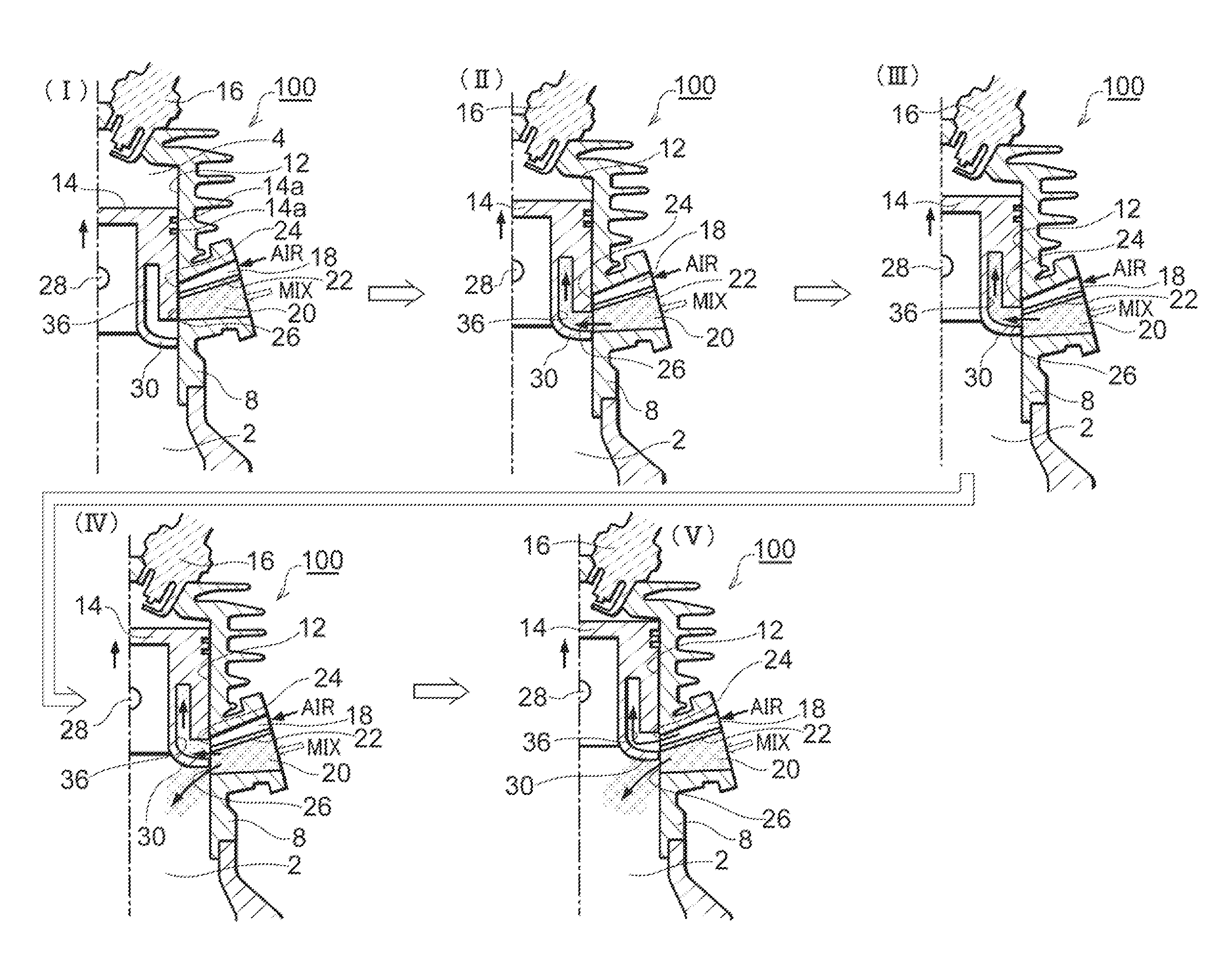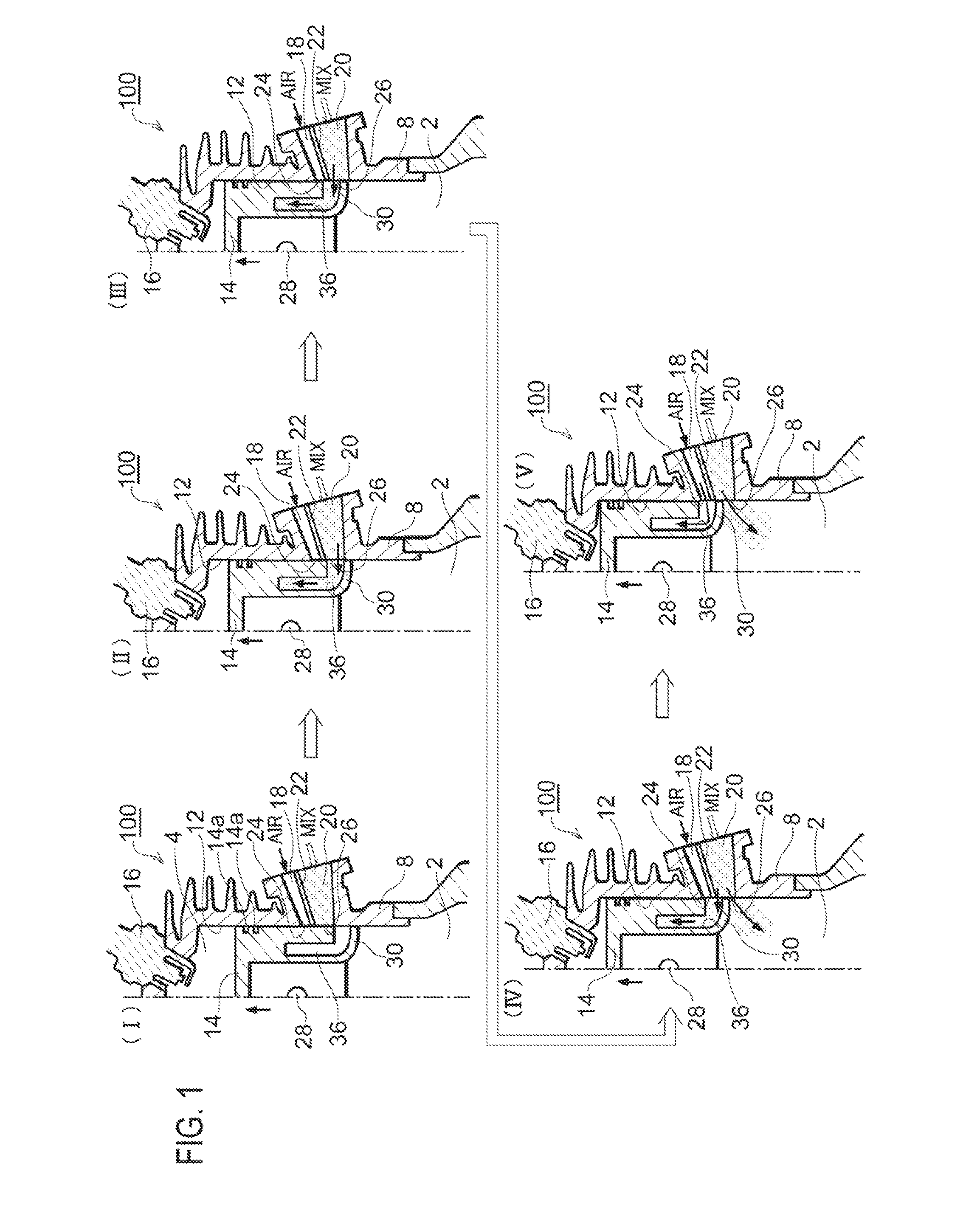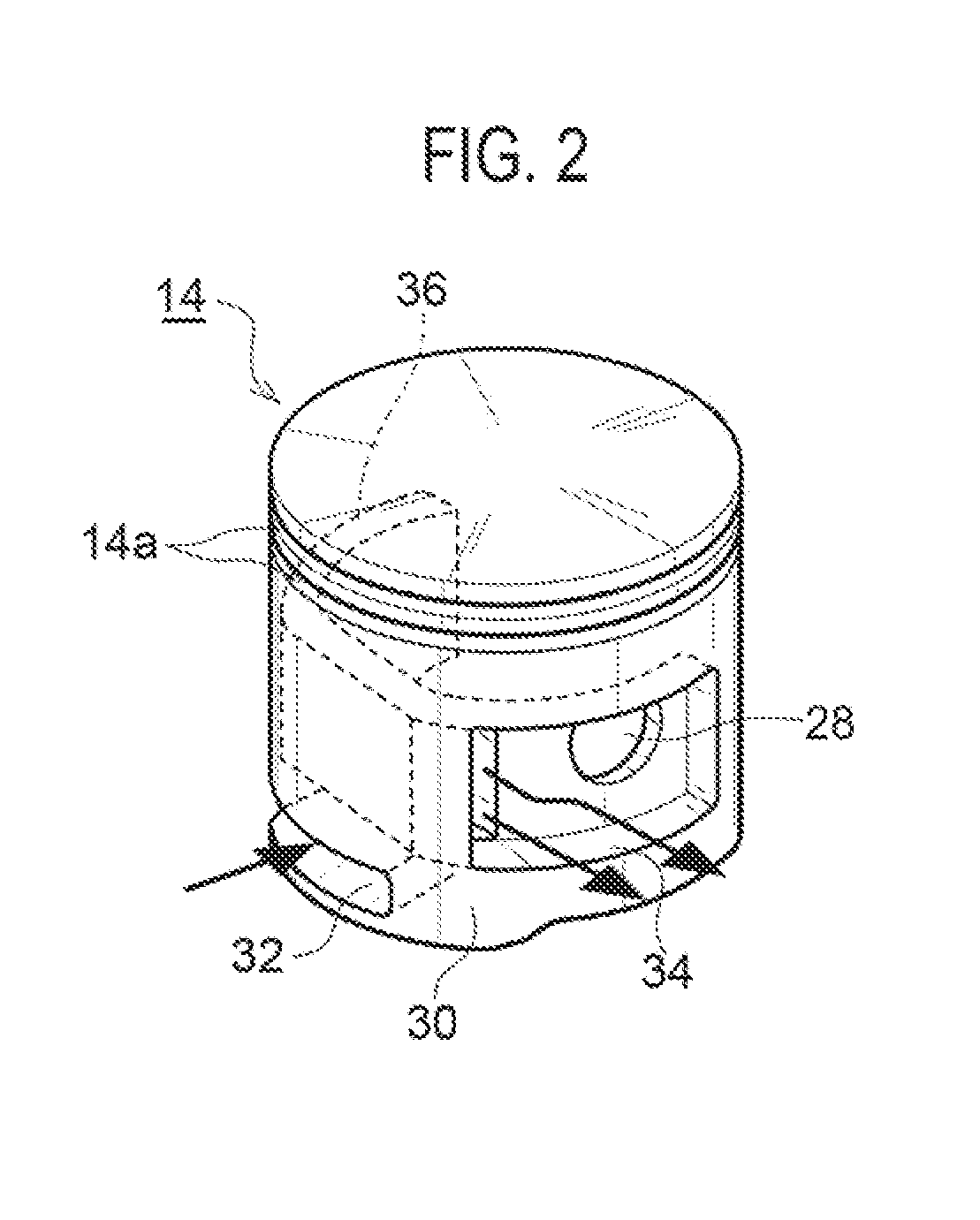Two-Stroke Internal Combustion Engine and Its Scavenging Method
a two-stroke, internal combustion engine technology, applied in combustion engines, machines/engines, pistons, etc., can solve the problems of large changes in air-fuel ratio, difficulty in deciding appropriate timing, and regulating the amount of heading air, so as to reduce acceleration failure or engine stop
- Summary
- Abstract
- Description
- Claims
- Application Information
AI Technical Summary
Benefits of technology
Problems solved by technology
Method used
Image
Examples
Embodiment Construction
[0041]A preferred embodiment of the present invention is explained below with reference to the accompanying drawings.
[0042]As illustrated in FIG. 1 and FIG. 4, an air-cooled two-stroke internal combustion engine 100 according to an embodiment of the invention is a single-cylinder, compact-sized engine to be mounted in, for example, a hand-held work apparatus such as a chain saw or a brush cutter. Like conventional ones, this engine 100 includes scavenging passages 6 each communicating with both a crankcase 2 and a combustion chamber 4 (FIG. 4). The scavenging passages 6 are formed as an integral part of a cylinder block 8. The cylinder bore 12 has formed scavenging windows 10 each being an exit end of each scavenging passage 6. The scavenging windows 10 are opened and closed by reciprocal movements of the piston 14.
[0043]Like conventional ones, the engine 100 supplies air-fuel mixture (rich air-fuel mixture in the aforementioned context of this specification) into the crankcase 2, t...
PUM
 Login to View More
Login to View More Abstract
Description
Claims
Application Information
 Login to View More
Login to View More - R&D
- Intellectual Property
- Life Sciences
- Materials
- Tech Scout
- Unparalleled Data Quality
- Higher Quality Content
- 60% Fewer Hallucinations
Browse by: Latest US Patents, China's latest patents, Technical Efficacy Thesaurus, Application Domain, Technology Topic, Popular Technical Reports.
© 2025 PatSnap. All rights reserved.Legal|Privacy policy|Modern Slavery Act Transparency Statement|Sitemap|About US| Contact US: help@patsnap.com



